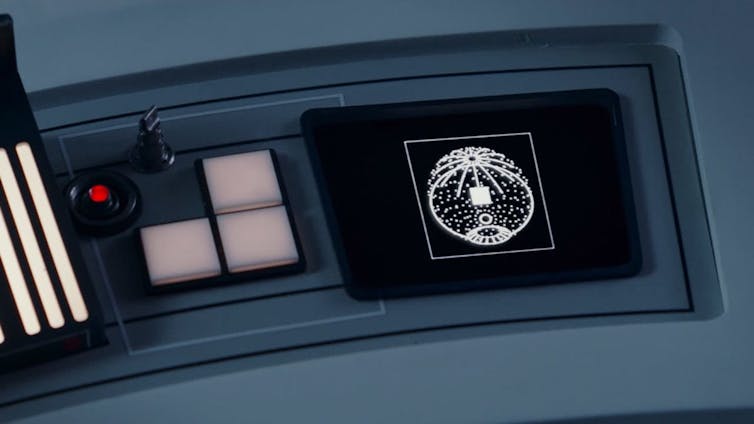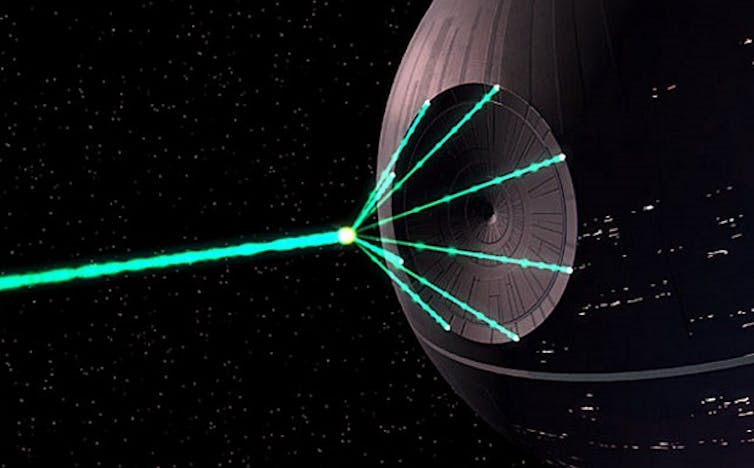Science fiction films are rarely about the future. Their distant planets and remote time periods instead reflect upon the concerns and anxieties of the contemporary moment. For instance, 1978’s Invasion of the Bodysnatchers played on the US public’s fear of communism at the height of the Cold War. Terminator 2: Judgement Day capitalised on concerns of a nuclear apocalypse and the fears associated with escalating artificial intelligence.
In the 21st century, in this era being referred to as The Anthropocene, fears of environmental disaster seem to have eclipsed those of a cold war, nuclear apocalypse or technological singularity. Rising temperatures, melting sea ice, ocean acidification, deforestation, soil erosion, overpopulation, biodiversity loss and the general degradation of ecosystems worldwide are an escalating threat to all life’s survival on Planet Earth. How then does contemporary sci-fi respond to these pressures and demands of living on a dying planet?
Many recent sci-fi films reflect this shift in concern. Interstellar, Snowpiercer, After Earth, IO: Last on Earth, Dawn of the Planet of the Apes, Wall-E, Avatar, Geostorm, Annihilation and Okja, situate a climate catastrophe – or more specific environmental concerns – as the dystopic impulses driving their narratives.
Read more: Environmental storytelling can help spread big ideas for saving the planet
This ecological imagination of disaster can also be seen in sci-fi films that are not ostensibly about the environment. Star Wars stands out in particular here. The transformations between the original 1977 Death Star in the Star Wars trilogy to the Death Stars found in 2015’s Star Wars: The Force Awakens and 2016’s Rogue One: A Star Wars Story, succinctly chart a movement from a technological to an ecological imagination of disaster in the genre.

Death Stars then and now
The potential devastation in the original Death Star is akin to a nuclear strike. The device’s advanced technology is front and centre of its representation – there are plenty of shots of buttons being prodded and levers being pulled prior to its laser firing. More obviously, this weapon’s total and instantaneous destruction of Princess Leia’s home planet of Alderaan neatly connects with fears of a huge atom bomb’s almost unimaginable destructive power.

By contrast the “new” Death Star of The Force Awakens – called “Star Killer Base” – is solar powered. It is a planet with a weapon in it, as opposed to the original, a weapon shaped like a planet.
Where the destruction of Alderaan by the Death Star felt like a massive explosion, when Star Killer Base’s lasers land on their target planets it is instead as if they go through some sort of geological catastrophe. This geological imagery is echoed when Star Killer Base is itself destroyed. It does not blow up immediately, as the original Death Star did, but undergoes what’s referred to as “a collapse”.
During this collapse two of the central characters, Kylo Ren and Rey, have time for a climactic lightsaber duel among the tectonic chaos, dodging great chasms that open in the ground as the snowy forest landscape is slowly engulfed. This drawn-out collapse sits in stark contrast to the instantaneous explosion of the 1977’s Death Star, wherein no such luxury of time was afforded to Grand Moff Tarkin.
The Death Star in Rogue One also draws on environmental imagery and a longer timescale of destruction. Rogue One is a prequel to 1977’s Star Wars – and the plot partly revolves around the Empire’s construction of this iconic battleship. So it is interesting that – despite a need to ensure continuity with the original film – Rogue One’s Death Star aesthetically operates rather differently to the Death Star first seen in 1977.
When its laser strikes the film quickly ignores the device’s technological underpinning. Instead a Frankenstein stitching of unruly weathers approaches on the target of Jedha City: part mudslide, part storm, part Earthquake, part pyroclastic flow. What once appeared as dangerous technology now manifests as dangerous weather.
Shifting crises
Star Wars’ Death Stars are not alone in this representational shift. In Independence Day (1996), aliens blow up the White House with a laser. By 2016’s Independence Day: Resurgence, the aliens are reinvented as intergalactic miners who use this laser to drill into the Earth’s core to extract energy.
At the end of the original Planet of the Apes, Charlton Heston gets down on his knees and exclaims: “You maniacs! You blew it all up” – implying humans bombed themselves into near extinction. By the time Dawn of the Planet of the Apes came along in 2014, we were on the side of an environmentally situated and self-subsisting ape colony, who simply wish to be left alone in the forest. As with Star Wars, the technological seems to give way to the ecological in 21st-century iterations of 20th-century franchises.
Anthropocene anxieties
Susan Sontag’s 1965 article The Imagination of Disaster revolves around her belief that sci-fi films imagine the disaster narrative of the time in which they are made. These examples suggest that the disaster that is being imagined today is environmental, with these films situating the ecological concerns of a warming climate above and beyond that of nuclear Armageddon.
Such a shift in attention is timely and pertinent to the pressures of a rapidly warming climate, and at the time of writing the Amazon rainforest is still burning fiercely.
Through the mirrored unruly environments found in sci-fi cinema and our contemporary moment alike, we are reminded that the worst effects of ecological collapse are continually unfolding. And this crisis is not only happening on fictitious planets and in far-flung time periods – but right here and now on Earth.
This piece was originally published by The Conversation, but the content is my own. It is a shortened version of a recent academic article of mine published by Liverpool University Press.

Great article!
I haven’t notice the difference of the original Death Star from 1977’s Star Wars to Rogue One, thanks for pointing that out!
Maybe Episode 9 invites for a follow up article.